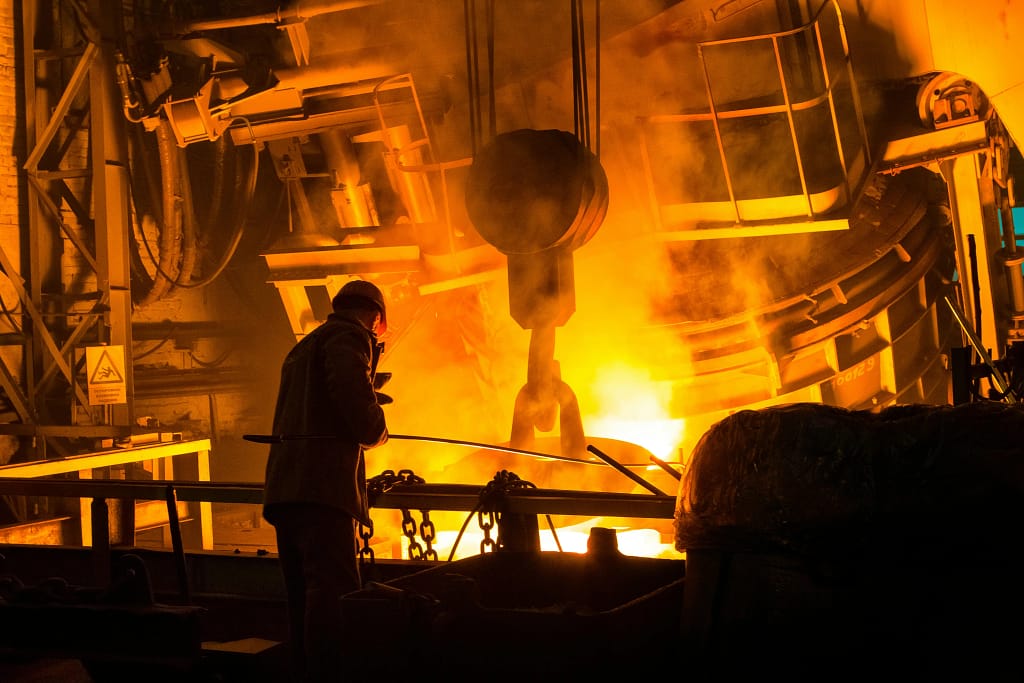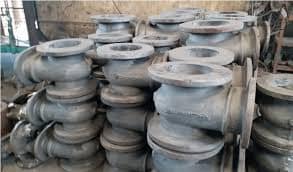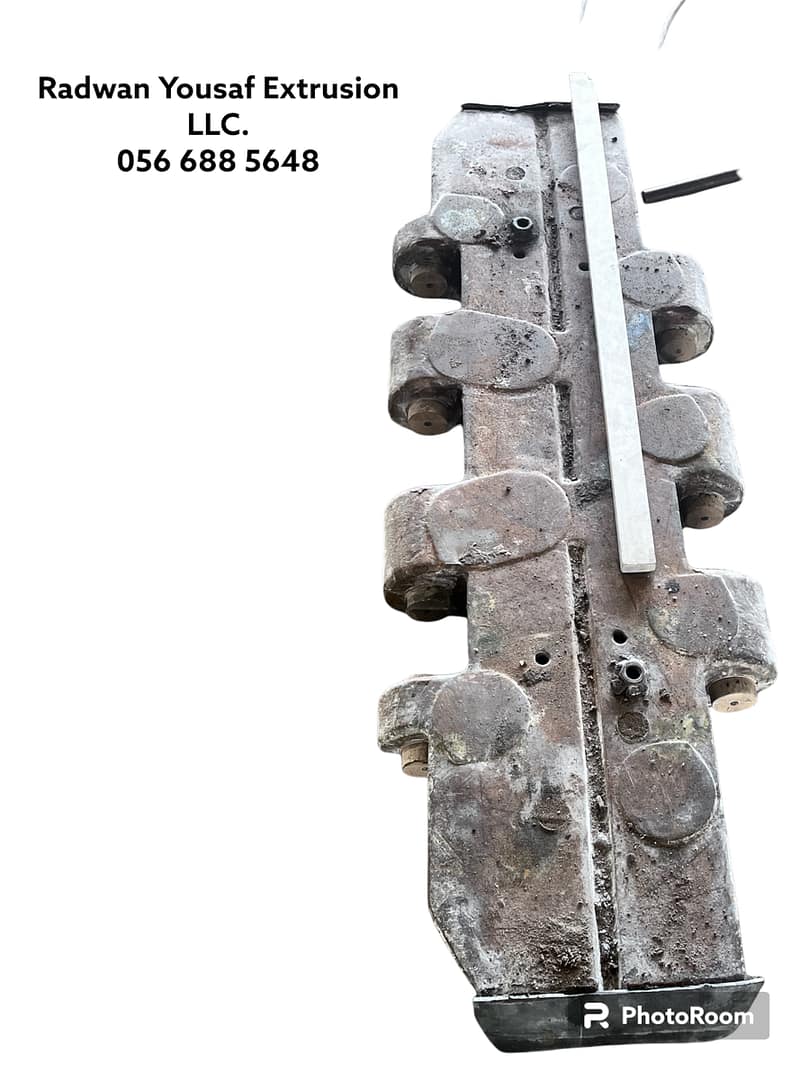Cast iron casting refers to a category of iron-carbon alloys that contain more than 2% carbon. It is a versatile and widely used material, valued for its durability, wear resistance, and excellent cast ability. Cast iron is typically made by melting pig iron and adding small amounts of other elements to achieve specific properties.
Key Properties of Cast Iron casting :
High Carbon Content: Typically 2%–4% by weight, which contributes to its brittleness and hardness.
Good Wear Resistance: Excellent for applications subjected to abrasion or heav loading.
High Compressive Strength: Ideal for structural and heavy-duty industrial applications.
Brittleness: Lacks ductility and malleability, making it prone to fracture under tension.
Good Thermal Conductivity: Useful in cookware and heat transfer applications.
Damping Capacity: Superior at absorbing vibrations, making it ideal for engine blocks and machinery bases.

Types of Cast Iron casting :
Gray Cast Iron casting :
Contains flake graphite in its microstructure.
Good thermal conductivity and vibration damping. Brittle but relatively easy to machine.
Common in engine blocks, pipes, and cookware.
White Cast Iron casting:
Contains carbide impurities, making it very hard and wear-resistant. Brittle and difficult to machine.
Used in wear-resistant applications like grinding balls and mill liners.
Ductile (Nodular) Cast Iron casting
Contains spherical graphite nodules. Used in automotive components, gears, and hydraulic systems.
Malleable Cast Iron casting:
Heat-treated white cast iron casting to convert carbides into graphite clusters.
Combines ductility with strength. Used for small, detailed castings like brackets and fittings.
Compacted Graphite Iron casting (CGI) :
Graphite structure lies between gray and ductile iron. Offers a balance of thermal conductivity, damping, and strength.
Used in high-performance diesel engine components.

Common Applications
Construction: Pipes, columns, and machinery bases.
Automotive: Engine blocks, brake drums, and differential housings.
Cookware: Skillets, pans, and griddles.
Advantages:
| Low production cost. Excellent cast ability (ability to take complex shapes). High durability under compressive loads. Disadvantages: Brittleness, especially in white and gray cast iron. Poor tensile strength compared to steel. Susceptible to corrosion unless protected. |
Production of Cast Iron casting :
Cast iron casting is produced in a foundry using the following general steps:
Melting:
Raw Materials: Pig iron (primary ingredient), scrap iron, steel, and alloying elements are charged into a furnace.
Furnaces Used:
Cupola Furnace: Traditional, economical, and widely used.
Electric Arc Furnace (EAF): More energy-efficient and suitable for higher purity requirements.
Induction Furnace: Offers precise control over temperature and composition.
The materials are melted and combined, forming a molten iron alloy.

Alloying:
Small amounts of elements like silicon, manganese, chromium, and magnesium are added to tailor the properties of the cast iron casting .
Silicon: Promotes graphite formation and increases machinability.
Manganese: Improves wear resistance and reduces brittleness.
Chromium and Nickel: Enhance corrosion resistance and strength.
Casting:
The molten cast iron casting is poured into molds made of sand, metal, or ceramic, depending on the desired precision and finish.
Cooling rates are controlled to influence the microstructure and properties.
Heat Treatment (Optional):
Certain types, such as malleable cast iron, undergo heat treatment to refine the microstructure and improve mechanical properties.
Microstructure of Cast Iron:
The properties of cast iron depend on its microstructure, determined by cooling rate, alloying elements, and heat treatment. The key phases in cast iron are:
Ferrite: Soft and ductile, contributing to machinability.
Pearlite: A combination of ferrite and cementite, offering hardness and strength.
Cementite (Fe₃C): A hard and brittle carbide phase, providing wear resistance.
Graphite: Present as flakes, nodules, or clusters, influencing brittleness, ductility, and thermal properties.
Costing Lower Higher
Advantages of Cast Iron:
| Versatility: Dimensional Stability: Cost-Effective: Vibration Damping: Ease of Casting: | Suitable for a wide range of applications. Retains shape during machining and under load. Economical compared to steel and other alloys. Ideal for reducing noise and vibrations in machinery. Can be cast into complex shapes with minimal defects. |

Brittleness: Susceptible to cracking under tensile or impact loads.
Corrosion: Requires coatings or alloying for improved resistance.
Weight: Heavier than alternative materials like aluminum.
Limited Weld ability: Difficult to weld due to high carbon content and brittleness.
Innovations in Cast Iron:
Modern advancements in casting techniques and alloying have expanded the applications of cast iron. For example:
Lightweight Cast Iron casting : By reducing wall thickness and optimizing composition, weight is minimized while retaining strength.
High-Performance Cast Iron casting: Compacted graphite iron (CGI) is increasingly used in high-efficiency engines due to its strength and thermal properties.
Recycling: Cast iron is highly recyclable, making it environmentally friendly in manufacturing.
Applications of Cast Iron casting :
Due to its unique properties, cast iron is used in a broad range of industries. Below is a detailed list of applications:
1. Construction Industry
Pipes and Fittings: Gray cast iron pipes are commonly used for water distribution and drainage systems due to their strength and corrosion resistance.
Columns and Beams: Used in historical and modern architecture for structural support.
Manhole Covers: Durable and able to withstand heavy loads in urban environments.
2. Automotive and Transportation
Engine Blocks: The vibration-damping properties of gray and ductile cast iron make it ideal for internal combustion engines.
Brake Discs and Drums: High wear resistance and thermal stability ensure reliable performance.
Gears and Bearings: Ductile iron is used in powertrains and mechanical systems for its strength and fatigue resistance.
3. Cookware and Kitchen Equipment
Pots, Pans, and Skillets: Popular for their excellent heat retention and even cooking.
Grills and Griddles: Durable and ideal for high-heat cooking applications.
4. Industrial Machinery
Machine Tool Frames: Used for bases and frames of heavy machinery due to its vibration-damping capacity.
Pump Housings: Resistant to wear and able to handle fluids under pressure.
Agricultural Equipment: Plowshares, seed drills, and other components benefit from cast iron’s durability
5. Energy and Power Generation

Wind Turbine Housings: Ductile iron is used for components that require strength and fatigue resistance.
Hydropower Turbine Casings: High compressive strength makes it suitable for water-flow applications.
6. Railway and Marine
Railway Brake Shoes: White cast iron is used for its hardness and wear resistance.
Anchor Chains and Ship Parts: Corrosion-resistant grades are employed in marine environments.
7. Art and Decorative Elements
Ornamental Structures: Intricate designs for gates, railings, and benches.
Statues and Fountains: Durable and visual
Factors Influencing the Selection of Cast Iron casting:
When choosing cast iron for an application, the following factors are considered:
Mechanical Properties:
Load-bearing requirements (compressive, tensile, or shear strength).
Resistance to wear, fatigue, and impact.
Thermal Properties:
Heat retention and conductivity (important for cookware and engine components).
Resistance to thermal cycling (important in high-temperature applications).
Corrosion Resistance:
Suitability for humid or chemically aggressive environments.
Ease of machining and finishing to meet dimensional tolerances.
Welding and joining requirements.
Cost and Availability:
Cost-effectiveness compared to alternative materials like steel or aluminum.
Availability of specific grades and compositions.
Maintenance and Longevity of Cast Iron casting :
Proper maintenance is crucial to ensure the longevity of cast iron components:
Corrosion Protection:
Use coatings (e.g., paint, enamel) or galvanizing to prevent rust.
Apply protective oils or sealants for outdoor or humid environments.
Regular Inspection:
Monitor for cracks or wear, especially in components under cyclic loads or abrasion.
Proper Usage:
Avoid subjecting brittle grades to excessive tensile or impact forces.
Use appropriate lubricants in moving parts to minimize wear.
Heat Treatment:
Components can be annealed or normalized to relieve stresses and enhance toughness.
Environmental Considerations:

Recyclability:
Cast iron is 100% recyclable, making it a sustainable choice for manufacturing.
Scrap cast iron is commonly reused in foundries to produce new components.
Energy Efficiency:
Modern foundries use energy-efficient furnaces to reduce the carbon footprint of cast iron production.
Lifecycle:
Durable and long-lasting, cast iron components reduce the need for frequent replacements, lowering waste over time.
Innovations in Cast Iron casting : Advanced Casting Techniques:
Improved mold designs and casting methods minimize defects and improve precision.
High-Performance Alloys:
Development of specialized cast iron grades, such as CGI and austenitic ductile iron, for demanding applications.
Additive Manufacturing:
Research into 3D printing with cast iron powders opens new possibilities for complex and customized parts.
Surface Treatments:
Enhanced coatings and treatments improve wear, corrosion resistance, and thermal performance.
https://csgextrusion.com/wp-admin/about.php